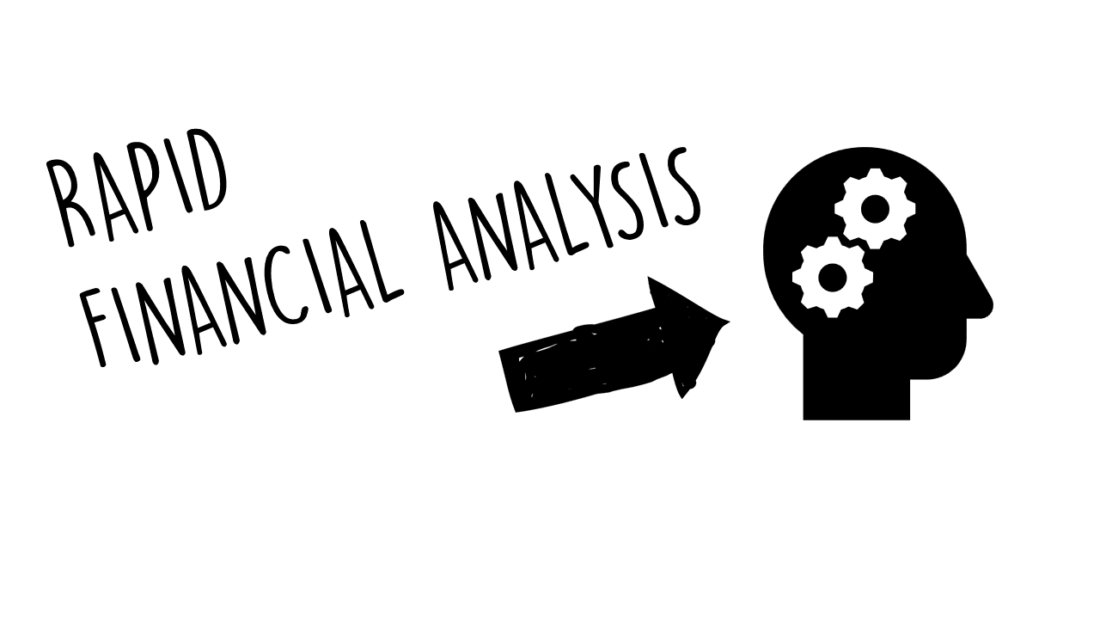Introduction
Understanding the income statement is crucial for the success of any business. The income statement provides valuable insights into a company’s financial performance and helps business owners make informed decisions. In today’s competitive business landscape, where rapid decision-making is essential, the need for quick financial analysis has become even more critical. This article will explore the importance of understanding the income statement and the benefits of rapid financial analysis in today’s fast-paced business environment.
Understanding the Income Statement: A Key to Business Success
The income statement, also known as the profit and loss statement, is a financial statement that summarizes a company’s revenues, expenses, and net income over a specific period. Its purpose is to provide an overview of a company’s financial performance and profitability.
The components of an income statement typically include revenue or sales, cost of goods sold, gross profit, operating expenses, and net income. Revenue represents the total amount of money generated from sales or services provided. Cost of goods sold refers to the direct costs associated with producing or delivering those goods or services. Gross profit is calculated by subtracting the cost of goods sold from revenue.
Operating expenses include all other costs incurred in running the business, such as salaries, rent, utilities, and marketing expenses. Net income is the final figure on the income statement and represents the company’s profit after all expenses have been deducted from revenue.
Accurate and timely financial reporting is crucial for businesses to understand their financial position and make informed decisions. It allows business owners to assess their profitability, identify areas for improvement, and plan for future growth. Without a clear understanding of their income statement, businesses may struggle to make strategic decisions that can impact their long-term success.
The Importance of Rapid Financial Analysis in Today’s Competitive Business Landscape
In today’s fast-paced business environment, where competition is fierce and market conditions can change rapidly, quick decision-making is essential. Businesses need to be able to analyze their financial data quickly and accurately to stay ahead of the competition and seize opportunities.
Rapid financial analysis provides several benefits for businesses. Firstly, it allows business owners to identify trends and patterns in their financial data. By analyzing their income statement in real-time, businesses can spot areas of improvement and make necessary adjustments to their operations. This can help them optimize their performance and increase profitability.
Delayed financial analysis, on the other hand, can pose significant risks for businesses. Without timely insights into their financial performance, businesses may miss out on opportunities or fail to address issues that could impact their bottom line. In a competitive business landscape, where every decision counts, delayed financial analysis can be detrimental to a company’s success.
Breaking Down the Income Statement: What Every Business Owner Needs to Know
To fully understand the income statement, business owners need to be familiar with its key components. These components include revenue and sales, cost of goods sold, gross profit, operating expenses, and net income.
Revenue or sales represent the total amount of money generated from selling goods or services. It is a critical metric for businesses as it directly impacts their profitability. Cost of goods sold refers to the direct costs associated with producing or delivering those goods or services. It includes expenses such as raw materials, labor costs, and manufacturing overheads.
Gross profit is calculated by subtracting the cost of goods sold from revenue. It represents the profit generated from the core operations of the business before deducting operating expenses. Operating expenses include all other costs incurred in running the business, such as salaries, rent, utilities, and marketing expenses. Net income is the final figure on the income statement and represents the company’s profit after all expenses have been deducted from revenue.
Understanding these components of the income statement is crucial for business owners as it allows them to assess their profitability and make informed decisions about their operations.
Uncovering Hidden Insights: How Rapid Financial Analysis Can Transform Your Business
Rapid financial analysis can provide business owners with valuable insights into their company’s financial performance. By analyzing their income statement in real-time, businesses can identify trends and patterns that may not be apparent in delayed analysis.
For example, by comparing revenue and sales figures over different periods, businesses can identify seasonal trends or changes in customer behavior. This can help them adjust their marketing strategies or production schedules to maximize their sales potential.
Rapid financial analysis also allows businesses to spot areas of improvement. By closely monitoring their income statement, businesses can identify cost-saving opportunities or areas where they can increase their profitability. For example, by analyzing their cost of goods sold, businesses may discover that certain suppliers are charging higher prices or that there are inefficiencies in their production processes. By addressing these issues promptly, businesses can optimize their operations and increase their profit margins.
Furthermore, rapid financial analysis enables business owners to make informed decisions about their operations. By having real-time insights into their financial performance, businesses can assess the impact of different strategies or initiatives on their profitability. This allows them to make data-driven decisions that are more likely to lead to success.
The Power of Real-Time Data: Unlocking the Secrets of the Income Statement
Real-time financial data is crucial for accurate and timely financial analysis. It allows business owners to have up-to-date insights into their company’s financial performance and make informed decisions based on the most current information.
There are several tools and technologies available today that enable businesses to access real-time financial data and analyze their income statement more effectively. Cloud-based accounting software, for example, allows businesses to track their income and expenses in real-time and generate accurate financial reports instantly.
Business intelligence tools also play a crucial role in real-time financial analysis. These tools enable businesses to consolidate data from various sources, such as accounting software, sales systems, and customer relationship management (CRM) platforms, into a single dashboard. This allows business owners to have a holistic view of their financial performance and make informed decisions based on real-time insights.
The benefits of real-time data in analyzing the income statement are significant. It allows businesses to identify issues or opportunities promptly and take appropriate action. For example, if a business notices a sudden increase in operating expenses, they can investigate the cause immediately and address it before it impacts their profitability. Real-time data also enables businesses to track their progress towards their financial goals more accurately and make adjustments if necessary.
Maximizing Profitability: Leveraging Rapid Financial Analysis for Business Growth
One of the primary goals of any business is to maximize profitability. Rapid financial analysis can play a crucial role in achieving this goal by helping business owners identify profit drivers and analyze profit margins.
By closely monitoring their income statement in real-time, businesses can identify the factors that contribute most to their profitability. For example, they may discover that certain products or services have higher profit margins than others or that certain customer segments generate more revenue. By focusing on these profit drivers, businesses can allocate their resources more effectively and increase their overall profitability.
Analyzing profit margins is also essential for maximizing profitability. By comparing gross profit margins and net profit margins over different periods, businesses can assess the impact of changes in revenue or expenses on their profitability. This allows them to make informed decisions about pricing strategies, cost-saving initiatives, or investments that can improve their profit margins.
Strategies for maximizing profitability may include increasing sales volumes, reducing costs, improving operational efficiency, or diversifying revenue streams. By leveraging rapid financial analysis, businesses can identify the most effective strategies for their specific circumstances and implement them promptly.
Identifying Key Performance Indicators: A Guide to Analyzing the Income Statement
Key performance indicators (KPIs) are metrics that businesses use to measure their performance against specific objectives or targets. Analyzing the income statement can help business owners identify relevant KPIs for their industry and track their progress towards their goals.
Different industries may have different KPIs based on their unique characteristics and objectives. For example, a retail business may track metrics such as sales per square foot, inventory turnover, or customer acquisition cost. A manufacturing business, on the other hand, may focus on metrics such as production yield, scrap rate, or on-time delivery.
Calculating and interpreting KPIs requires a deep understanding of the income statement and the specific goals of the business. By analyzing their income statement in real-time, businesses can calculate their KPIs accurately and track their performance against their targets. This allows them to make data-driven decisions and take corrective actions if necessary.
Using KPIs to measure business performance is essential for setting realistic goals, monitoring progress, and making informed decisions about resource allocation. By leveraging rapid financial analysis, businesses can ensure that they are on track to achieve their objectives and make adjustments if necessary.
Driving Decision-Making: How Rapid Financial Analysis Can Inform Business Strategy
Financial analysis plays a crucial role in informing strategic planning and decision-making. By analyzing their income statement in real-time, businesses can gain valuable insights into their financial performance and align their financial goals with their overall business objectives.
Financial analysis provides businesses with a clear understanding of their strengths, weaknesses, opportunities, and threats. It allows them to assess the financial feasibility of different strategies or initiatives and make informed decisions about resource allocation.
For example, if a business is considering expanding into a new market or launching a new product line, they can analyze their income statement to assess the potential impact on revenue, expenses, and profitability. This allows them to evaluate the financial risks and rewards associated with the proposed strategy and make an informed decision.
Making data-driven decisions based on financial analysis is crucial for long-term business success. It ensures that businesses are not making decisions based on assumptions or gut feelings but on solid financial data. By leveraging rapid financial analysis, businesses can make informed decisions that are more likely to lead to success and avoid costly mistakes.
Uncovering Opportunities for Cost Savings: The Role of the Income Statement
Analyzing expenses and cost structures is an essential part of financial analysis. By closely monitoring their income statement in real-time, businesses can identify areas for cost reduction and uncover opportunities for cost savings.
Expenses are a significant component of the income statement and can have a significant impact on a company’s profitability. By analyzing their operating expenses, businesses can identify areas where costs can be reduced without compromising the quality of their products or services.
For example, businesses may discover that they are spending too much on marketing or advertising without seeing a significant return on investment. By reallocating their marketing budget or exploring more cost-effective marketing channels, they can reduce their expenses while still reaching their target audience effectively.
Analyzing cost structures is also crucial for identifying areas where businesses can negotiate better deals with suppliers or streamline their production processes. By closely monitoring their cost of goods sold, businesses can identify inefficiencies or bottlenecks in their supply chain and take appropriate action to reduce costs.
Strategies for cost savings may include renegotiating contracts with suppliers, implementing lean manufacturing principles, or investing in technology that improves operational efficiency. By leveraging rapid financial analysis, businesses can identify the most effective strategies for reducing costs and increasing profitability.
Empowering Business Owners: Harnessing the Potential of Rapid Financial Analysis
To harness the potential of rapid financial analysis, business owners need to have a solid understanding of financial literacy and access to the right resources and tools.
Financial literacy is crucial for business owners as it allows them to understand and interpret their income statement accurately. It enables them to ask the right questions, make informed decisions, and communicate effectively with their financial team or advisors.
There are several resources and tools available today that can help business owners implement rapid financial analysis in their business. Online courses, books, and workshops can provide business owners with the knowledge and skills they need to analyze their income statement effectively. They can learn how to calculate and interpret key financial ratios, identify trends and patterns, and make informed decisions based on their financial data.
In addition to financial literacy, business owners also need access to the right tools and technologies for rapid financial analysis. Cloud-based accounting software, business intelligence tools, and real-time reporting dashboards can provide businesses with the real-time data they need to analyze their income statement effectively.
Implementing rapid financial analysis in a business requires a systematic approach. Business owners should start by defining their financial goals and objectives and identifying the key metrics they need to track. They should then implement the necessary processes and systems to collect, analyze, and report their financial data in real-time. Finally, they should regularly review and evaluate their financial performance to ensure that they are on track to achieve their goals.
Conclusion
Understanding the income statement is crucial for the success of any business. It provides valuable insights into a company’s financial performance and helps business owners make informed decisions. In today’s competitive business landscape, where rapid decision-making is essential, the need for quick financial analysis has become even more critical.
Rapid financial analysis allows businesses to identify trends and patterns, spot areas of improvement, and make informed decisions about their operations. It enables them to analyze their income statement in real-time and uncover hidden insights that may not be apparent in delayed analysis.
By leveraging rapid financial analysis, businesses can maximize profitability, identify key performance indicators, drive decision-making, uncover opportunities for cost savings, and empower business owners with the knowledge and tools they need for success.
Business owners are encouraged to take action and implement rapid financial analysis in their business to unlock its full potential for growth and profitability. By investing in financial literacy, leveraging the right resources and tools, and implementing a systematic approach, business owners can harness the power of rapid financial analysis and take their business to new heights.




